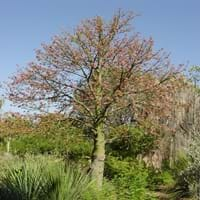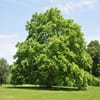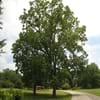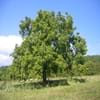Life Span
Annual and Perennial
Perennial
Origin
South America, Brazil
Australia
Types
Not Available
Not Available
Habitat
Dry areas, Forest edges
Canopy, Rainforest
USDA Hardiness Zone
9-12
9-13
Sunset Zone
H1, 13, 16, 17, 18, 19, 20, 21, 22, 23, 24
H1, H2, 15, 16, 17, 18, 19, 20, 21, 22, 23, 24
Habit
Oval or Rounded
Spreading
Flower Color
Yellow, Lemon yellow
Rose
Flower Color Modifier
Bicolor
Bicolor
Fruit Color
Brown, Sandy Brown
Gold, Brown
Leaf Color in Spring
Green, Light Green
Not Available
Leaf Color in Summer
Green, Gray Green
Green, Blue Green
Leaf Color in Fall
Green, Gray Green
Green, Blue Green
Leaf Color in Winter
Not Available
Green, Blue Green
Leaf Shape
Oblong
Lobulated
Plant Season
Spring, Winter
Spring, Summer, Fall
Sunlight
Full Sun
Full Sun, Partial Sun
Type of Soil
Clay, Loam, Sand
Clay, Loam, Sand
The pH of Soil
Acidic, Neutral, Alkaline
Acidic, Neutral
Soil Drainage
Well drained
Average
Bloom Time
Early Spring, Late Winter
Late Spring, Early Summer, Summer
Tolerances
Drought
Wet Site, Drought, Soil Compaction
Where to Plant?
Ground
Ground
How to Plant?
Seedlings, Seperation, Vegetative Reproduction
Seedlings
Plant Maintenance
Medium
Medium
Watering Requirements
Keep the ground moist but not water-logged, Requires watering in the growing season, Water more in summer, Water occasionally
Do not let dry out between waterings, Requires consistently moist soil
In Summer
Lots of watering
Lots of watering
In Spring
Moderate
Moderate
In Winter
Average Water
Average Water
Soil pH
Acidic, Neutral, Alkaline
Acidic, Neutral
Soil Type
Clay, Loam, Sand
Clay, Loam, Sand
Soil Drainage Capacity
Well drained
Average
Sun Exposure
Full Sun
Full Sun, Partial Sun
Pruning
Cut leaves after fall, Pinch or prune as they grow to promote branching and bushiness, Prune before Winter, Prune when plant is dormant, Remove dead leaves, Remove deadheads
Remove damaged leaves, Remove dead branches, Remove dead leaves
Fertilizers
All-Purpose Liquid Fertilizer
All-Purpose Liquid Fertilizer
Pests and Diseases
Pests and diseases free, Red blotch
Root rot
Plant Tolerance
Drought
Drought
Flower Petal Number
Single
Single
Foliage Texture
Medium
Medium
Foliage Sheen
Glossy
Matte
Attracts
Not Available
Hummingbirds
Allergy
no allergic reactions
Not Available
Aesthetic Uses
Showy Purposes
Showy Purposes
Beauty Benefits
Not Available
Not Available
Environmental Uses
Air purification
Air purification
Medicinal Uses
No Medicinal Use
No Medicinal Use
Part of Plant Used
Leaves, Wood
Seeds, Wood
Other Uses
Wood is used for making furniture, Wood is used in construction
Edible seed, Used as Ornamental plant, Used to make wood shingles
Used As Indoor Plant
No
No
Used As Outdoor Plant
Yes
Yes
Garden Design
Feature Plant, Shade Trees, Street Trees, Tropical
Feature Plant, Shade Trees, Street Trees, Tropical
Botanical Name
HANDROANTHUS billbergii
BRACHYCHITON discolor
Common Name
Guayacán, Tabebuia
Bush Kurrajong, Pink Flame Tree, Queensland Lacebark
In Hindi
Tabebuia
Pink Flame Tree
In German
Tabebuia
Rosa Flame Tree
In French
Tabebuia
Flame Tree Rose
In Spanish
Tabebuia
Pink árbol de la llama
In Greek
Tabebuia
Ροζ Φλόγα Δέντρο
In Portuguese
Tabebuia
Árvore Chama Rosa
In Polish
Tabebuia
Różowy Flame Tree
In Latin
Tabebuia
Pink arbor flamma
Phylum
Not Available
Magnoliophyta
Class
Not Available
Magnoliopsida
Family
Bignoniaceae
Sterculiaceae
Genus
Tabebuia
brachychiton
Clade
Angiosperms, Asterids, Eudicots
Angiosperms, Eudicots, Rosids
Tribe
Not Available
Sterculieae
Subfamily
Not Available
Sterculioideae
Number of Species
Not Available
Properties of Tabebuia and Pink Flame Tree
Wondering what are the properties of Tabebuia and Pink Flame Tree? We provide you with everything About Tabebuia and Pink Flame Tree. Tabebuia doesn't have thorns and Pink Flame Tree doesn't have thorns. Also Tabebuia does not have fragrant flowers. Tabebuia has allergic reactions like no allergic reactions and Pink Flame Tree has allergic reactions like no allergic reactions. Compare all the properties and characteristics of these two plants. Find out which of these plant can be used as indoor plant. If you are interested to decorate your house and garden, find out aesthetic uses, compare them and select the plant which will beautify your surrounding. Along with beautification, try comparing medicinal and edible uses of Tabebuia and Pink Flame Tree and you can choose the plant having best and most benefits.
Season and Care of Tabebuia and Pink Flame Tree
Season and care of Tabebuia and Pink Flame Tree is important to know. While considering everything about Tabebuia and Pink Flame Tree Care, growing season is an essential factor. Tabebuia season is Spring and Winter and Pink Flame Tree season is Spring and Winter. The type of soil for Tabebuia is Clay, Loam, Sand and for Pink Flame Tree is Clay, Loam, Sand while the PH of soil for Tabebuia is Acidic, Neutral, Alkaline and for Pink Flame Tree is Acidic, Neutral.
Tabebuia and Pink Flame Tree Physical Information
Tabebuia and Pink Flame Tree physical information is very important for comparison. Tabebuia height is 1,220.00 cm and width 1,070.00 cm whereas Pink Flame Tree height is 1,220.00 cm and width 610.00 cm. The color specification of Tabebuia and Pink Flame Tree are as follows:
Tabebuia flower color: Yellow and Lemon yellow
Tabebuia leaf color: Green and Light Green
Pink Flame Tree flower color: Rose
- Pink Flame Tree leaf color: Not Available
Care of Tabebuia and Pink Flame Tree
Care of Tabebuia and Pink Flame Tree include pruning, fertilizers, watering etc. Tabebuia pruning is done Cut leaves after fall, Pinch or prune as they grow to promote branching and bushiness, Prune before Winter, Prune when plant is dormant, Remove dead leaves and Remove deadheads and Pink Flame Tree pruning is done Remove damaged leaves, Remove dead branches and Remove dead leaves. In summer Tabebuia needs Lots of watering and in winter, it needs Average Water. Whereas, in summer Pink Flame Tree needs Lots of watering and in winter, it needs Average Water.





